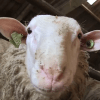No brewer can do without malt. Together with water, hop and yeast, the germinated cereal grain is one of the four primary ingredients of any beer. Barley generally is the preferred grain of choice, but other varieties, such as wheat or rye, can be used too. Grains contain starch, which can be turned into fermentable sugars. In order to do this, however, enzymes are needed. These are developed once grain starts to germinate. Malt producers therefore simulate the circumstances under which this happens in their so-called malting houses. After the enzymes are developed and active, but before it sprouts, the grain is dried. The temperature of the air used for this purpose determines the colour of the malt, which ranges from the paleness of the varieties used for pilsners and other light coloured beers to the deep roasted darkness of beers such as stouts and porters.
Although both Dutch beer producers as well as consumers have been catching up in the past few years, the Belgians are still undisputed beer specialists. We therefore purchase our malts in Belgium. At Dingemans, to be precise, a family company specializing in quality malts since the 19th century.
In the video above we documented the long journey of grain arriving at the Dingemans facilities till the moment it is delivered, as beautiful malt, at our brewery in Amsterdam.










